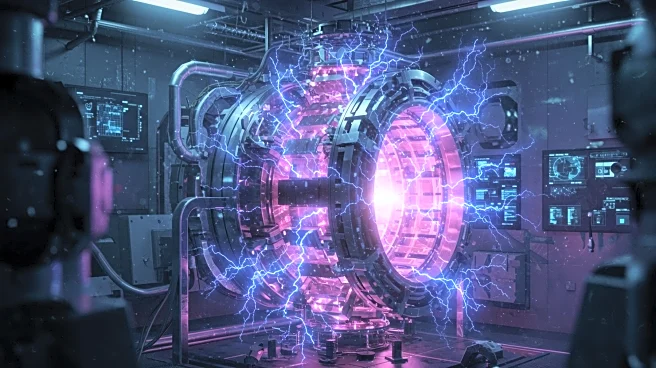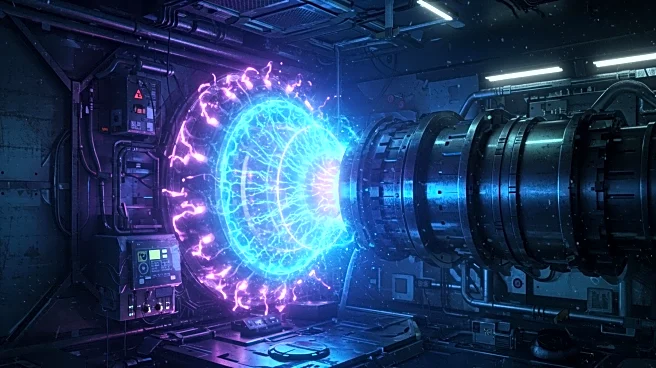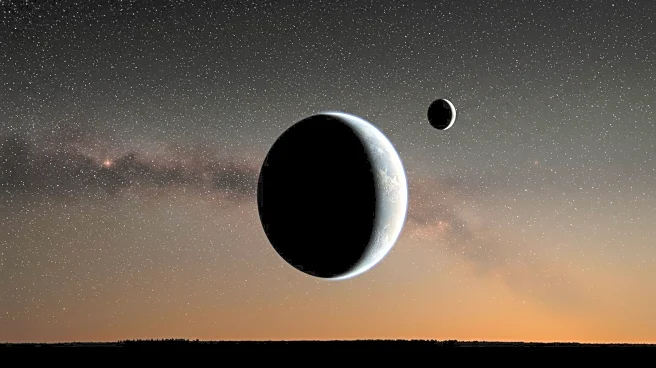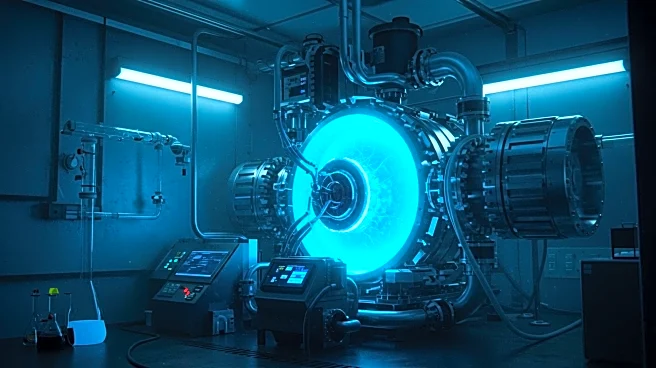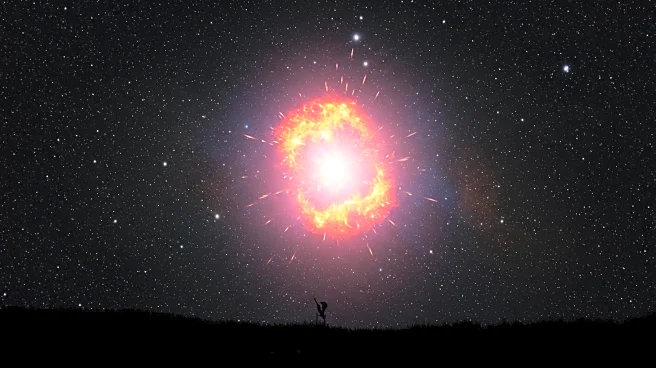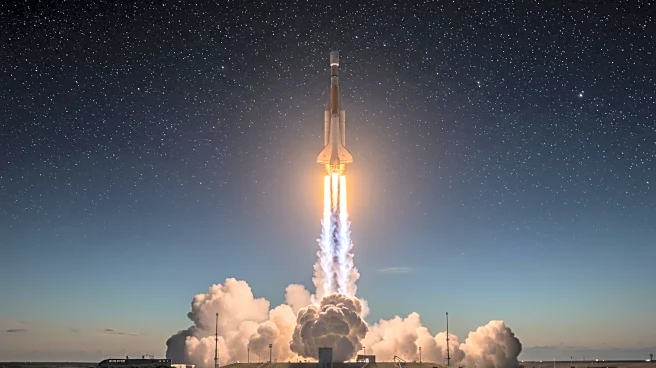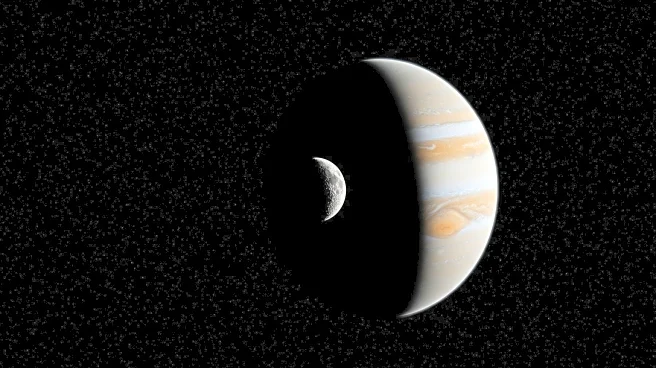What is the story about?
What's Happening?
An international team of scientists has successfully created liquid carbon in a laboratory setting for the first time. Using the high-power DIPOLE 100-X laser at the European XFEL, researchers were able to transform solid carbon into liquid under extreme pressure and temperature conditions. This experiment, reported in Nature, marks a significant achievement in understanding matter under high pressure. Liquid carbon, which occurs naturally inside planets, could play a crucial role in future energy technologies like nuclear fusion. The experiment involved capturing data during the brief moment when carbon was liquefied, using ultrashort X-ray pulses to probe the liquid state.
Why It's Important?
The ability to create and study liquid carbon in a controlled environment opens new avenues for research in energy technologies and planetary science. Understanding the properties of liquid carbon can aid in modeling planetary interiors and developing nuclear fusion technologies. This breakthrough provides scientists with a new tool to explore matter under extreme conditions, potentially leading to advancements in energy generation and material science. The experiment also demonstrates the capabilities of the European XFEL, highlighting its role in cutting-edge scientific research.
What's Next?
Future experiments may focus on refining the process and exploring other materials under similar conditions. The success of this experiment could lead to faster and more detailed studies of matter under high pressure, enhancing our understanding of planetary science and energy technologies. Researchers may also investigate the potential applications of liquid carbon in various industries, including energy and materials science.
AI Generated Content
Do you find this article useful?


